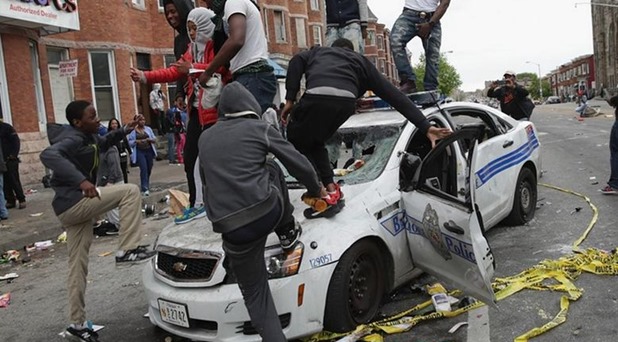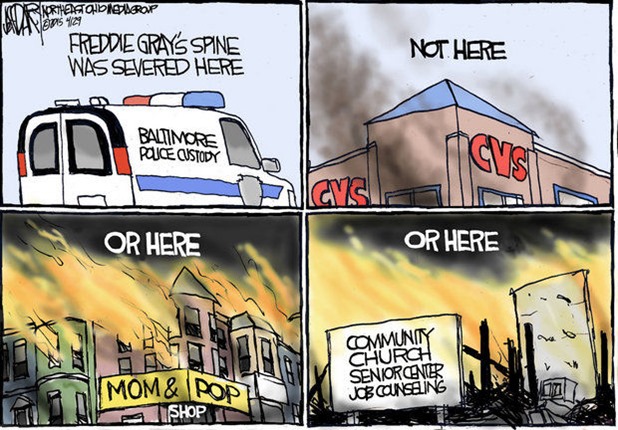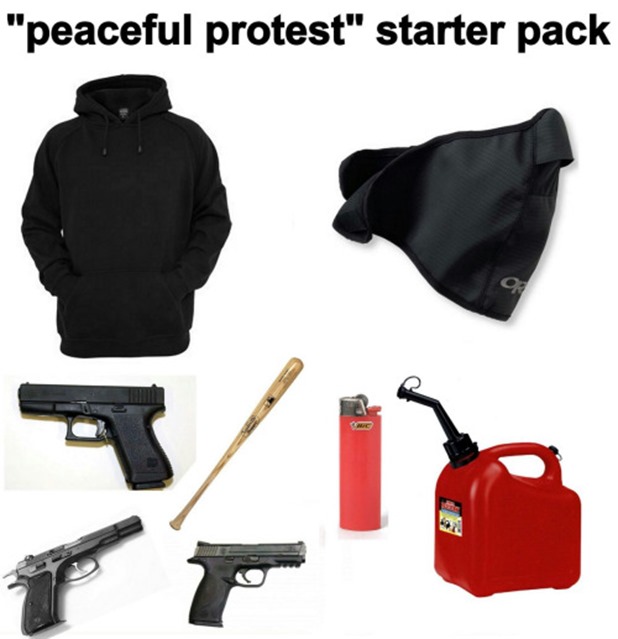Conservative Tribune
May 6, 2015
In recent days, a large chunk of the media coverage of the Baltimore riots has focused on the police department, rather than the criminals in the streets.
Here are 17 things that the media won’t report on, so we will.
1. Freddie Gray had a long arrest record. He had been arrested 22 times in Maryland, primarily for possession and distribution of illegal narcotics. In addition, Gray had been involved 20 criminal court cases, five of which were still active at the time of his death.
2. Gray was armed. Police found him carrying a switchblade knife, which while legal to own in Maryland, it is illegal to be concealing a switchblade.
3. Police pursued Gray after he made eye contact with officers and fled. While looking at a police officer isn’t a crime, fleeing is sufficient cause for pursuit if the suspect is in a drug-infested area, which Gray was.
4. Police officers may not have known that failing to secure Gray with a seat belt was against policy. A policy written in 1997 said seat belt use in police vans was discretionary. A new policy requiring their use was communicated to officers on April 9, just three days before Gray was arrested, and the police union president said many officers were not yet aware of the policy changes, so it is possible the officers simply didn’t know about the new law, or weren’t used to it and forgot.
5. A friend of an officer who arrested Gray said the suspect wasn’t secured for good reason. The friend claims that the officers couldn’t control him because he would attack or bite them if they attempted to do so.
6. Gray may have been intentionally trying to injure himself in the van. Multiple reports claim that Gray was not buckled because officers wanted to deliberately give him a rough ride. However, another prisoner in the van with Gray told investigators that Gray was banging against the walls of the van and the prisoner believed he was intentionally trying to injure himself.
7. A call to “purge” circulated on social media among Baltimore students. On the morning of the Monday riots, a flier went out on social media referencing a 2013 movie depicting a 12-hour period when all crimes were legalized. This may have convinced some students there would be no repercussions for rioting and looting.
8. The looting may have been premeditated. Many of the rioters arrived on the scene carrying crowbars, surprisingly well-equipped for a spur of the moment riot.
9. Baltimore fought to open the CVS that was burned down. Baltimore Mayor Stephanie Rawlings-Black’s administration “worked very hard” to get CVS pharmacy to open a store in the low-income neighborhood where the rioting occurred, she said. Despite it being the only store where residents could fill prescriptions, rioters burned it down.
10. Firefighters attempting to quell the blaze were hampered. Someone slashed a hose that had been turned on the flames, to prevent the fire from being extinguished.
11. Rioters also set fire to 144 vehicles.
12. Protestors had already rampaged before the major riots broke out. The previous Saturday, protestors in downtown Baltimore became violent and damaged at least five police cars and pelted police with rocks. Six officers were injured, yet officers were still unprepared for Monday’s riots.
13. Baltimore already had a serious crime problem. In a city of 645,000, there are reportedly an estimated 60,000 drug addicts, including 48,000 on heroin. Last year the city’s murder rate was fifth in the nation, with 37.4 murders per 100,000 population.
14. The 1968 riots already wreaked havoc on parts of Baltimore. Following the assassination of Martin Luther King Jr., the Baltimore neighborhood that burned Monday was the scene of the worst violence.
15. As far away as Los Angeles, police were encouraged to ride in pairs. The order was in response to what Baltimore police determined was a “credible threat” of gang violence against police across the United States. Thankfully, no officers have been attacked.
16. Protestors in Philadelphia conducted a “Philly is Baltimore” demonstration at City Hall. The protestors drew parallels between Gray’s death and the death of a local man shot during a traffic stop in December. Evidence later indicated that Brandon Tate-Brown (the local man) was reaching into his car for a loaded pistol when he was shot.
17. Just 25 percent of U.S. adults consider the riots to be an expression of legitimate outrage. This is according to Rasmussen Report survey, which also said that 63 percent characterize it as mostly criminals taking advantage of the situation. (H/T Newsmax)
As Fox Mulder believed, the truth is out there.
Just don’t look for it from the mainstream media.
Share this everywhere so we can get the word out about the truth behind the Baltimore riots.



